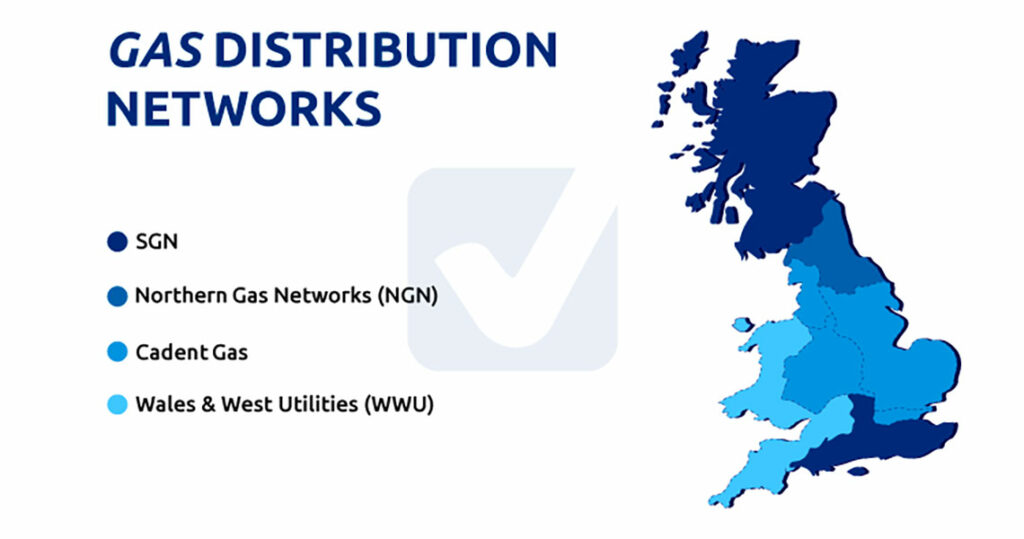The utility sector consists of companies that provide basic everyday amenities, including electricity, natural gas and water/sewage services. Utility companies are private, for-profit entities, but since they provide a public service, they are subject to substantial government oversight and regulation.
The many types of utilities available include large companies that offer multiple services such as electricity and natural gas. Other utility companies might specialize in just one type of service, such as water. Some utilities rely on clean and renewable energy sources like wind turbines and solar panels, to produce electricity.
The utility sector tends to do well as a defensive play against macroeconomic downturns. The movement towards “clean” energy, along with competition-enhancing legislation, initiatives, and investments in renewable energy resources, has some analysts forecasting strong growth for the utility industry in the 2020s.
An early 2021 power and utility industry outlook report by Deloitte identified five trends for the utility industry:
- Enhanced competition, inter alia sparked by government regulations, open up the market to smaller, innovative firms using renewable energy sources, like wind or solar power
- Expansions in infrastructure, to manage new renewable energy sources
- Greater electrification of transportation, and longer-range batteries for cars and trucks
- Oil companies and other traditional-energy players entering the renewable-energy field
- A greater emphasis on disaster readiness
Did you know?
Based on the revenue figures accurate as of August 3, 2020, Investopedia has ranked the top 10 world utility companies:
1) Électricité de France SA (ECIFY)
- Revenue (TTM): $76.8 billion
- Net Income (TTM): $2.2 billion
- Market Cap: $30.2 billion
- 1-Year Trailing Total Return: -17.7%
- Exchange: OTC
French state-owned Électricité de France SA (EDF) provides services such as power generation, transmission, distribution, and trading. As a major provider of power in France as well as elsewhere in the world, the company is involved in every aspect of the electricity industry. The company’s production is currently 90% free from carbon dioxide emissions.2
2) Enel SpA (ENLAY)
- Revenue (TTM): $67.6 billion
- Net Income (TTM): $2.4 billion
- Market Cap: $92.2 billion
- 1-Year Trailing Total Return: 39.5%
- Exchange: OTC
Based in Rome, Enel SpA is a multinational power company and a leading integrated player in the world’s power and gas markets, with a presence in 32 countries and a focus on Europe and Latin America. More than half of Enel’s electricity production is from thermoelectric, nuclear, geothermal, wind, solar PV, and other renewable sources.
3) Engie (ENGIY)
- Revenue (TTM): $67.0 billion
- Net Income (TTM): $1.1 billion
- Market Cap: $32.1 billion
- 1-Year Trailing Total Return: -13.0%
- Exchange: OTC
Engie is a French multinational utility providing a broad spectrum of energy and environmental services to customers in more than 70 countries. Previously known as GDF Suez, Engie has operations in electricity generation and distribution, natural gas, and renewable energy. The name change reflects the company’s departure from the state-owned nationalized gas monopoly.
4) Tokyo Electric Power Co. Holdings (TKECY)
- Revenue (TTM): $57.4 billion
- Net Income (TTM): $0.5 billion
- Market Cap: $4.4 billion
- 1-Year Trailing Total Return: -40.9%
- Exchange: OTC
Tokyo Electric Power Co. generates and distributes electricity through the Tokyo area and several other regions in Japan. An integrated utility company, the firm utilizes hydroelectric, nuclear, and thermal power sources.
5) E.ON SE (EONGY)
- Revenue (TTM): $55.1 billion
- Net Income (TTM): $0.9 billion
- Market Cap: $30.3 billion
- 1-Year Trailing Total Return: 22.8%
- Exchange: OTC
Germany-based E.ON is an international energy supplier with operations across Europe. The company’s focus is on power and gas distribution, while it also operates a customer solutions branch that is focused on energy sales, infrastructure, and growth businesses. E.ON’s biggest markets are Germany and Sweden.
6) Korea Electric Power Corp. (KEP)
- Revenue (TTM): $49.4 billion
- Net Income (TTM): -$1.3 billion
- Market Cap: $10.1 billion
- 1-Year Trailing Total Return: -33.3%
- Exchange: New York Stock Exchange
South Korea’s largest electric utility, Korea Electric Power Corp. generates and distributes electricity for a variety of residential and business uses. The company operates nuclear, thermal, and hydroelectric power units.
7) Iberdrola SA (IBDRY)
- Revenue (TTM): $38.3 billion
- Net Income (TTM): $4.0 billion
- Market Cap: $78.9 billion
- 1-Year Trailing Total Return: 39.9%
- Exchange: OTC
Iberdrola SA is a Spanish multinational electric utility with operations in the U.S., U.K., Spain, Portugal, and throughout Latin America. Among the company’s subsidiaries are Scottish Power, Iberdrola USA, and Elektro (Brazil).
8) Exelon Corp. (EXC)
- Revenue (TTM): $33.7 billion
- Net Income (TTM): $2.6 billion
- Market Cap: $37.6 billion
- 1-Year Trailing Total Return: -11.3%
- Exchange: NASDAQ
Exelon Corp. operates as a utility services holding company serving millions of customers in Pennsylvania, Illinois, and several other areas of the U.S. The U.S. company is one of the largest domestic power generators, with power capacity generated by nuclear, gas, wind, hydroelectric, and solar stations.
9) Kansai Electric Power Co. Inc (KAEPY)
- Revenue (TTM): $29.3 billion
- Net Income (TTM): $1.2 billion
- Market Cap: $8.2 billion
- 1-Year Trailing Total Return: -22.4%
- Exchange: OTC
Kansai Electric Power Co. provides electricity to customers in Osaka and the surrounding Kansai region in Japan. The company builds and maintains electric power facilities and utilizes thermal, geothermal, nuclear, and hydroelectric power sources.
10) Centrica PLC (CPYYY)
- Revenue (TTM): $27.6 billion
- Net Income (TTM): -$0.8 billion
- Market Cap: $3.6 billion
- 1-Year Trailing Total Return: -33.0%
- Exchange: OTC
British multinational Centrica provides energy services to 25 million consumer accounts. Centrica primarily supplies electricity and gas to customers across the U.K. and elsewhere in Europe as well as in the U.S.
Electricity
Electricity utility companies, broadly speaking, can be grouped into the following four supplier segments:
- Generators: These operators create electrical power.
- Energy Network Operators: Grid operators, regional network operators, and distribution network operators sell access to their networks to retail service providers.
- Energy Traders and Marketers: By buying and selling energy futures and other derivatives and creating complex “structured products,” these companies usefully help utilities and power-hungry businesses secure a dependable supply of electricity at a stable, predictable price.
- Energy Service Providers and Retailers: In many countries of the world, consumers can now choose their own retail service providers.
What is a DNO?
A DNO, or distribution network operator, is a company that owns and operates the network of towers and cables that carry low-voltage electricity to our homes and businesses from the electricity transmission network.
Great Britain has 14 different DNO regions. However, they are managed by just six distribution companies or DNOs.
- Electricity North West serves customers across most of the North West of England.
- Northern Powergrid is the DNO for the North East of England, Yorkshire and northern Lincolnshire. This includes large urban areas such as Leeds, Newcastle and Hull.
- SP Energy Networks is the distribution company that operates the network in Merseyside, Cheshire, North Wales and North Shropshire, as well as in Central and Southern Scotland.
- Scottish and Southern Electricity Networks (SSEN) owns and operates the electricity distribution networks in northern Scotland and central Southern England. The company is a subsidiary of SSE.
- UK Power Networks is the DNO for London, the South East and East of England.
- Western Power Distribution operates the electricity distribution network for Wales, the Midlands and South West England.
What is an IDNO?
An IDNO is an Independent Distribution Network Operator. These companies own and operate smaller distribution networks that are located within the areas that DNOs serve.
Like DNOs, IDNOs are licensed by the senergy regulator Ofgem. While IDNOs do not have all the same license conditions as the larger distribution network operators, Ofgem does cap all IDNO charges for customers at a level that is consistent with DNO charges.
The following list contains the current IDNOs in Great Britain:
- Eclipse Power Limited
- Energy Assets Networks Limited
- Last Mile Electricity
- ESP Electricity Limited
- Fulcrum Electricity Assets Limited
- Harlaxton Energy Networks Limited
- Independent Power Networks Limited
- Leep Electricity Network Limited
- Murphy Power Distribution Limited
- The Electricity Network Company Limited
- UK Power Distribution Limited
- Utility Assets Limited
- Vattenfall Network Limited
DNO map
The DNO map (or electricity distribution map) below shows Great Britain’s 14 electricity network regions and their corresponding distribution network operators.

Source: Selectra.co.uk
Gas Distribution Networks
Before gas reaches your home, it must travel through a medium or low-pressure distribution network of pipelines, which are usually underground. There are eight gas distribution networks (GDNs) in Great Britain. These are managed by four different gas distribution companies.
In addition to managing the gas pipes, gas distribution companies also provide gas emergency services for their geographical region.
Reasons you would need to contact the operator of your gas distribution network include the following:
- To report a gas leak
- If you smell gas
- To get connected to the gas mains
- To have your gas meter or pipes moved
- To have your gas meter box installed/replaced (outside only!)
Gas distribution companies
The gas distribution companies that manage the network can also be called gas transporters or distribution network operators (DNOs); however, the term DNO is more commonly used to describe electricity distribution companies.
The table below breaks down Britain’s four gas distribution companies and their corresponding regions and customer service phone numbers:

Source: Selectra.co.uk
Water and sewerage companies
Water and wastewater companies collect and store water, treat it to high standards, pipe it to homes and businesses across the country, and then take away used water and treat it so that it can be returned to rivers and the sea.
In the UK, there are eleven companies that provide both water and sewerage services to large regions across England and Wales. Many customers get both water and sewerage services from one of these eleven companies – but some get their water from a water only company.

Source: Water UK










